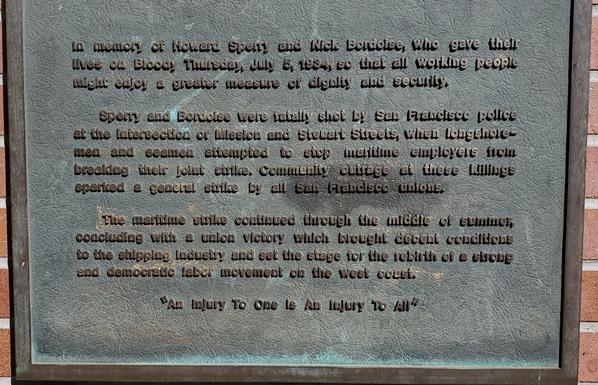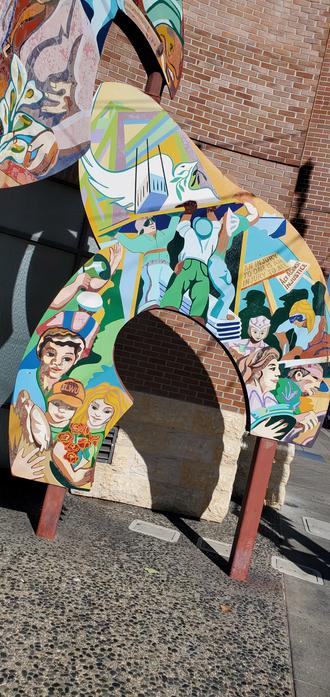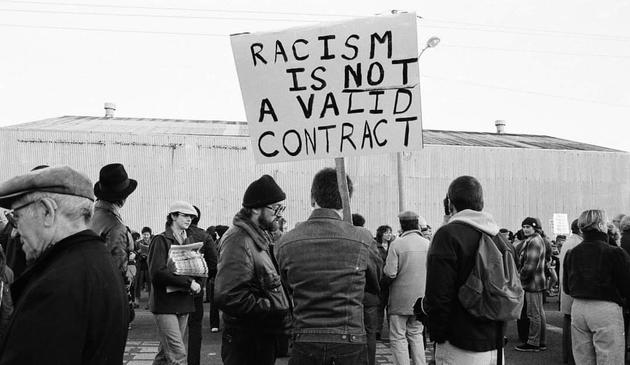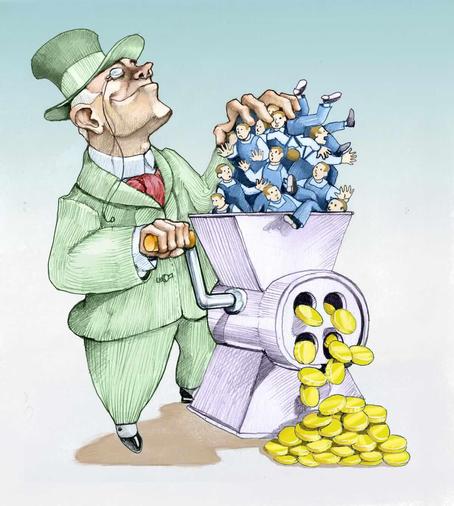Today in Labor History July 5, 1934: Two strikers were shot and killed and more than 100 were injured by San Francisco police in what came to be known as "Bloody Thursday," leading to one of the last General Strikes in U.S. history. The West Coast maritime strike lasted 84 days and spread from San Pedro, in Los Angeles Country up to Puget Sound, in Washington. One of the strike leaders in San Francisco was Harry Bridges, a former member of the IWW who had immigrated from Australia. Teamsters supported the strike by refusing to handle “hot” cargo that had been unloaded by scabs. 7-9 workers, in total, were killed during these strikes (in San Pedro, Seattle, Portland, and San Francisco); over 1000 were injured; and over 500 were arrested. In San Francisco, the National Guard, along with vigilantes, patrolled the streets with armored vehicles with machine guns mounted on them.
I used to have a neighbor who was a lifelong member of the typographical union. A really big guy named Herb, who told me that his most vivid memory of the strike was that the streets had become white from all the milk being dumped by dairy delivery drivers, in solidarity with the striking maritime workers.
The ILWU Mural General Strike Sculpture/Mural was created in 1984-86 to commemorate the 50th anniversary of the 1934 SF General Strike. The artists were Miranda Bergman, Tina Dresher, Nicole Emanuel, Lari Kilolani, James Morgan, Ray Patlán, Eduardo Pineda, James Prigoff, O'Brien Thiele, Horace Washington. The artwork now stands at the corner of Mission and Steuart Streets, in the old Rincon Hill neighborhood, the epicenter of the 1934 San Francisco Waterfront Strike and Bloody Thursday. This photo of the artwork was taken by James Prigoff, and can be found in the Found SF project: https://www.foundsf.org/Artist!_Mike_Mosher
I’ve included a close-up of the artwork in its current home, at Mission and Steuart Streets, along with a commemorative plaque (both photos by me). The plaque reads:
“In memory of Howard Sperry and Nick Bordoise, who gave their lives on Bloody Thursday, July 5, 1934, so that all working people might enjoy a greater measure of dignity and security.
Sperry and Bordoise were fatally shot by San Francisco police at the intersection of Mission and Steuart Streets, when longshoremen and seamen attempted to stop maritime employers from breaking their joint strike. Community outrage at these killings sparked a General Strike by all San Francisco unions.
The maritime strike continued through the middle of the summer, concluding with a union victory which brought decent conditions to the shipping industry and set the stage for the rebirth of a strong and democratic labor movement on the west cost.
An Injury to One is an Injury to all.”
#workingclass #LaborHistory #sanfrancisco #GeneralStrike #BloodyThursday #IWW #longshoremen #ilwu #police #PoliceBrutality #HarryBridges #maritime #nationalguard #Teamsters #solidarity #mural





